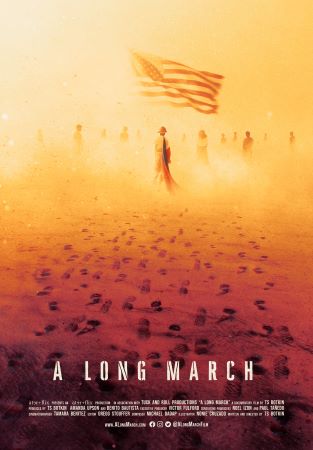
A Long March 2021
Distributed by Good Docs
Produced by T. S. Botkin, Amanda Upson, and Benito Bautista
Directed by T. S. Botkin
Streaming, 82 mins (60 mins)
High School - General Adult
History; Social Movements; World War II
Date Entered: 07/12/2023
Reviewed by Joseph Baumstarck, Jr., Adjunct Professor - Ivy Tech Community College and Independent ScholarA Long March is a film documentary attempting to assist Filipino veterans of World War II in gaining the American GI Benefits and citizenship promised as rewards for assisting the US military in the Philippine Campaign. Although promised these during the war, several million Filipino veterans have yet to receive any of these. Many of these veterans are now dead and no longer eligible. The surviving Filipino veterans have won small victories in achieving recognition for about twenty percent of the actual combatants. Despite paperwork demonstrating that many of the remaining veterans were actively participating in and with the US military during the Philippine Campaign, they still continue to be denied. The film highlights three Filipino veterans working to gain the recognition and benefits promised. Unfortunately, many rejected veterans served with guerrilla forces or as affiliated troops whose records were initially sparse for security reasons and then repeatedly lost and misplaced by several US governmental agencies. Even when all the records eventually became available many still did not receive the recognition and benefits they were entitled to because they served in U.S. sponsored guerrilla units. This problem is much worse for Filipino women veterans who often served in less conspicuous roles and more clandestine occupations.
Technically the film is well done and does an excellent job of highlighting a much-neglected aspect of American and International World War II history. The story is told mainly through the eyes of three Filipino veterans, contemporary photos, documents, and additional supporting characters assist in telling the story and verify many of the details. This film effectively supports the contention of the Filipino veterans that they served, as stated, were promised the veterans benefits and US citizenship they are fighting for, and that they have been neglected and ignored, often intentionally, ever since the war ended. The sixty-minute and eighty-two-minute versions do not differ much. The difference is mainly in the amount of documentation presented and the length of the conversations recorded. The eighty-two-minute version does not provide any new details or even clarify much. A negative is that the film glosses over the nature of guerrilla warfare, its history in the World War II Philippines, and how this impacted the Filipino veterans. This gloss is significant since most Filipino veterans with claims denied were involved in guerrilla activities. In contrast, most Filipino veterans with regular army units have received benefits and recognition.
This film accomplishes its objectives well and is rated highly recommended. It is a beneficial adjunct to history classes from high school through college and as educational material for the general public. It works well in schools, homeschools, discussion groups, history organizations, and veterans’ groups and should be widely available in libraries, especially academic ones.
Awards:Better Angel Lavine Fellow 2022; Nominated For Best Documentary and Best First Time Director by GI Film Festival San Diego
Published and licensed under the Creative Commons Attribution 4.0 license. Anyone can use these reviews, so long as they comply with the terms of the license.